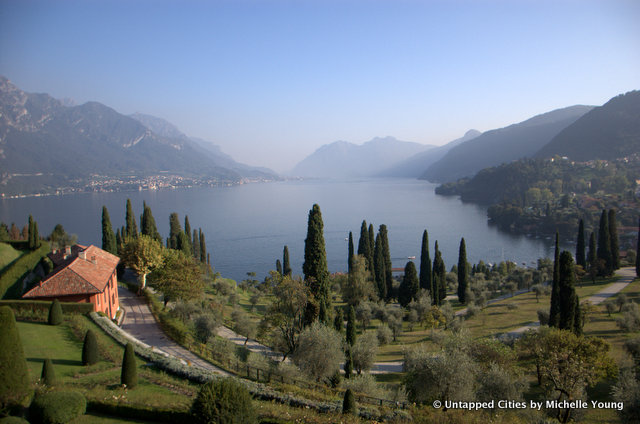Video produced by Don Downey.
I had the honor of organizing and participating in the Jane Jacobs Revisited: A Bellagio Conference, which took place at The Bellagio Center at Villa Serbellino, a center for learning and discussion operated by the Rockefeller Foundation in Bellagio, Italy. Spearheaded by Kate Ascher, author of The Works and The Heights, and Mary Rowe, Vice President of the Municipal Art Society of New York, the conference gathered twenty participants across city-building disciplines to mark the 50th anniversary of Jane Jacobs’ seminal book, The Death and Life of Great American Cities. On the agenda was to discuss the city principles Jane Jacobs promulgated in her book and address their applicability in the global cities of today.
The participants of Jane Jacobs Revisited included Edward Glaeser (Harvard University), Bing Thom (Bing Thom Architects), Nabeel Hamdi (Oxford Brookes), Helle Søholt (Gehl Architects), Jonathan Rose, Nicky Gavron (former London Deputy Mayor), Vishaan Chakrabarti (Columbia University GSAPP and SHoP Architects), John van Nostrand (PlanningAlliance), Eric Klinenberg (NYU), Clare Weisz (WXY Architecture), Andrew Altman (London Legacy Development Corporation), Alicia Glen (Goldman Sachs), Carrie Lam (Hong Kong Government), Padraic Kelly (Happold Consulting), Barbra Hoidn (UT Austin) and Jyoti Hosragrahar (Columbia University).

The programming included 3 minute Pecha Kuccha presentations on examples today that represented Jacobs’ principles and over four days of group discussion in different configurations of participants. Mary Rowe, one of the organizers of the conference told us, “It’s a Jane Jacobs world now,” and that we need to remember Jacobs was more about process, less about ideology. Says Rowe, Jacobs “was an early identifier of complexity, a supporter of organic design and diversities of all kinds, and believed everything was relational–nothing has a single cause. She had an extreme resistance to big, universal, grand one size fits all efforts from the public or private sector and believed physical, economic and ethical processes needed to interact to create the process of the city. Today there is a growing sense of what sustainable, organic, livable cities should be but there is a need to discuss the obstacles to that occurring.”
The Bellagio Framework, as put forth by the participants of Jane Jacobs Revisited is as follows:
The purpose of the city is to provide sustainable environments that allow all people to live, work, and achieve their aspirations in an environment that supports self-determination and promotes that common good.
1. Build a city of choices, an urban archipelago that offers diversity and fosters innovation.
2. Make places that promote socioeconomic mixing, openness, and cultural exchange.
3. Actively integrate nature and the city in shared spaces that bring people joy.
4. Ensure environmental health and human security.
5. Encourage compact land use with diverse physical grain, matching density, infrastructure and local conditions.
The Rockefeller Foundation clearly states in its book on the history of Bellagio conferences that the interactions, discussions and serendipitous meetings that arise from sharing the spaces at Villa Serbellino are more valuable than the physical output for the conference. This could not have been more clear as bonds were forged and commitments were made to create something that could be shared and disseminated.
Thanks to filmmaker Don Downey and the perseverance of Mary Rowe and Kate Ascher to have this video from Jane Jacobs Revisited that can be shared. For additional photographs of the incredible Villa Serbelloni, click here.





